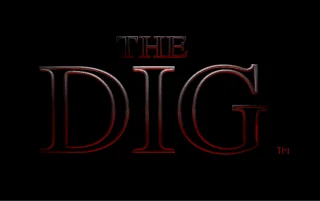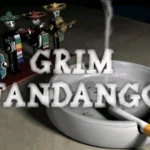Ah, the golden age of adventure games! If you’re anything like me, you cherish those pixelated worlds of mystery and charm. Today, let’s venture into one of the most captivating titles from that era: „The Dig“! Created by the legendary LucasArts, this game offers not just entertainment, but a voyage through the cosmos that challenges your intellect and stirs your imagination. Did you know that „The Dig“ was originally conceived by the acclaimed filmmaker Steven Spielberg? With its origin tracing back to the mind of a movie-making giant, it’s no wonder this game captivates with its cinematic storytelling and stunningly detailed worlds. So tonight, grab your space gear as we embark on this celestial journey. Let’s dive deep into what makes „The Dig“ a timeless masterpiece!
Table of Contents
The Legacy of LucasArts
Ah, LucasArts! Just saying the name brings a flood of nostalgia. I remember the first time I popped in a LucasArts disk—Monkey Island, anyone? I was hooked on their knack for blending humor with adventure and, honestly, sheer genius in game design. The unique thing about LucasArts was its ability to craft stories that could touch your heart and tickle your funny bone simultaneously. Integration of narrative and gameplay was seamless, which wasn’t the norm back then.
LucasArts‘ classic adventure games were my escape. Grim Fandango, Full Throttle, and Sam & Max Hit the Road were not just games but experiences. I learned patience and lateral thinking all thanks to their mind-bending puzzles. The creativity was off the charts—every game had its world, humor, and whimsy. Through humor and satire, the games often whispered truths about the real world.
What stood out was LucasArts‘ storytelling approach. Unlike many games that felt like mere scripted events, LucasArts made stories interactive narratives where the players shaped the outcome. I found their game design revolutionary for their impeccable blend of narrative, environment, and character development. They showed us how to fall in love with pixels and lines of code, turning storytelling into an immersive art form.
The Story Behind ‚The Dig‘
Now, let’s dive into ‚The Dig‘. Initially, Steven Spielberg had this wild idea intended to be a movie—yet, somehow, it found its true form as a game. Imagine an Indiana Jones-style caper set in space. Yep, that’s where it kicked off! Spielberg had this concept all about exploration and mystery, which LucasArts took under its wing.
The evolution from idea to reality saw several creative minds—writers, designers—molding the clay of Spielberg’s vision. It wasn’t a breeze, though. They hit a few bumps on the road; rewrites and design changes were aplenty. It taught them—and me watching unfold—adaptability is crucial, even with a genius idea in hand.
What set ‚The Dig‘ apart was its narrative ambition. Adventure games at the time often went for humor or light-heartedness. But ‚The Dig‘ aimed for depth and complexity. Its rich story explored themes of isolation, survival, and human connection, well ahead of many others at the time. The serious tone was a gutsy move, filled with emotional moments that struck a chord with many players, including myself.
Gameplay and Mechanics
Talking gameplay, ‚The Dig‘ was pure point-and-click gold. The mechanics were smooth and intuitive. All you needed was a mouse, some curiosity, and patience. I remember getting stuck on a particularly tough section and thinking, „I have a brain, right?“ The puzzles were deep and intricate, not the average „find the key“ sort.
These puzzles weren’t just static hurdles; they required critical thinking and imagination. They gave you a sense of accomplishment when you solved them. It was like piecing together an elaborate jigsaw, each click revealing more of the intriguing narrative.
The user interface was next-level for its time. With intricate details and visuals, it felt ahead of its era. It had this tactile quality; everything clicked—a testimony to the intuitive design. Navigating through puzzles and dialogues felt like second nature, which kept me glued for hours.
A Visual and Auditory Journey
The art style in ‚The Dig‘ was captivating. The graphics, although pixelated by today’s standards, were a visual feast back then. Achieving the look of an alien world with limited pixels—cherishing that sense of wonder was something. The team meticulously crafted everything from eerie landscapes to cosmic machinery, painting a picture far beyond the constraints of technology.
Then there was the soundtrack—oh, the soundtrack! Composed by Michael Land, it painted the galaxy with sounds. The ethereal music was more than just background filler; it was a full-fledged character in the game, elevating emotions and driving the narrative’s pace. I caught myself pausing just to listen.
Sound effects, too, were crucial. They were not just for show; every click, beep, or hum added depth and realism to the experience. It transformed the ambiance, making players feel a part of the environment. They brought the story to life in subtle yet profound ways.
Reception and Influence
When released, ‚The Dig‘ got mixed reviews. Some folks praised its depth, while others criticized its somber tone—but hey, you can’t please everyone. Although ‚The Dig‘ didn’t hit commercial gold, its influence was undeniable. It pushed the envelope for narrative-driven games and was a precursor to many modern story-rich adventures.
The game left a mark that inspired countless game developers to take risks with storytelling and game mechanics. Its impact was like a ripple that spread throughout the genre. Even today, both retro gamers and new players find joy in its exploration journey.
I’ve seen modern gamers take on ‚The Dig‘ and appreciate its craftsmanship, flaws, and all. They understand the game is a time capsule, a peek into an era when gaming was about exploration, not just instant gratification. ‚The Dig‘ still whispers its mysteries to those willing to listen.
Conclusion
Reflecting on the cosmic odyssey that is „The Dig,“ there’s no denying its place in the pantheon of adventure games. Its rich narrative, combined with LucasArts‘ signature charm and innovation, offers an experience that’s hard to forget. Whether you’re a seasoned gamer reminiscing about the good old days or a new explorer seeking out classic adventures, „The Dig“ promises a journey worth taking. So what are you waiting for? Time to let your inner explorer soar among the stars!



